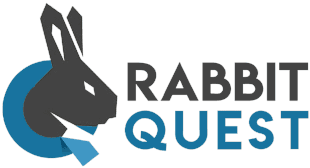How do you motivate employees to participate in a vitality initiative? 💪
As an HR manager, you are constantly looking for ways to improve the health and well-being of your employees. But how do you make sure your employees actually participate in the vitality initiative? The key often lies in creating the right conditions: providing space during working hours, organising an inspiring kick-off and offering choices and flexibility. This requires not only practical steps, but also sending a clear message. In this blog, we discuss how to approach this as an HR manager.
Time to read: 5 minutes
Space during working hours: no pressure, only opportunities 🔮
You probably know the drill: employees are enthusiastic about a new initiative, but as soon as they realise they have to sacrifice free time for it, motivation quickly sinks in. The feeling of ‘having to’ in their own time is often counterproductive. Here lies a huge opportunity for you as an HR manager. By making it explicit that the vitality initiative takes place during working hours, you remove an important barrier. When employees understand that they do not feel pressure to do this in their free time, they will be more inclined to participate.
For example, you can start planning activities that take place during lunch breaks, such as a walk or short meditation. This gives employees the opportunity to participate without time pressure. Imagine starting an internal campaign tomorrow in which you clearly communicate that these initiatives fall during working hours. It sends a message: ‘We think your well-being is so important that we will give you working time for this.’ Employees will certainly appreciate this and be more likely to join in.
In addition, you could schedule a set time every week for a short vitality session, for example. Think of a 15-minute online stretch session at the beginning of the day or a virtual workshop on stress reduction. By presenting this as part of the working day, you give employees the feeling that participation is not an extra burden, but rather an opportunity to be energised.
The Kick-off Knaller: Vitality starts with a party! 🪩
A vitality initiative only really comes alive when it is launched in an engaging way. In this, the kick-off plays a crucial role. A well-organised kick-off moment can make the difference between a mediocre turnout and enthusiastic commitment. As an HR manager, you know that inspiration and energy are essential to get people moving. What could be more inspiring than a kick-off with engaging speakers highlighting the benefits of living a healthier life?
Imagine kicking off the vitality initiative with an interactive session led by an expert on health and well-being. For example, you invite a speaker who tells employees how small adjustments in their daily routine can make a big difference to their physical and mental health. This kind of meeting creates a sense of urgency and commitment. By setting a positive energy right from the start, employees will feel motivated to participate.
You could start planning such an event as early as tomorrow. For instance, organise an inspiring breakfast where the benefits of the vitality initiative are discussed, and where employees have the chance to ask questions or even participate in a short exercise right from the start. Make sure the atmosphere is energetic and positive so that you immediately set the tone for the success of the programme.
Choices, choices, choices: Everyone participates in their own way 🔥
Not every employee is the same, and that certainly applies to their needs when it comes to vitality. Some like running, while others may seek peace in meditation. Herein lies an important key: give your employees the freedom to choose which form of vitality suits them best. By offering a wide range of programme options, you ensure that every employee feels addressed and comfortable participating.
For example, consider offering different forms of vitality activities, from yoga to cooking workshops, and from mindfulness to sporting challenges. By letting employees choose what they want to participate in, you increase the chances of everyone finding something that suits them. Suppose you start a vitality programme tomorrow where employees can choose between a sports challenge, a healthy eating workshop or a mindfulness session. That way, you let them walk their own path, making participation more attractive.
Flexibility is essential here. Not every employee has the same working hours or private commitments. By offering the vitality initiative at different times and through different channels (such as online or physical), you give employees the space to choose when and how they want to participate. As an HR manager, you can immediately apply this by, for example, sending out a poll in which employees can indicate the times and forms of communication they prefer to participate. This not only gives you choices, but also shows that you take employees' individual needs seriously.
Conclusion
As an HR manager, you can motivate employees to participate in a vitality initiative in various ways. By taking the pressure off their shoulders and making it clear that they can participate during working hours, you create low-threshold access. With an inspiring kick-off event you ensure an energetic start, and by offering sufficient choice and flexibility, you respond to the individual preferences of employees. In this way, you create a working environment in which vitality is not something extra, but a valuable part of the daily routine.




